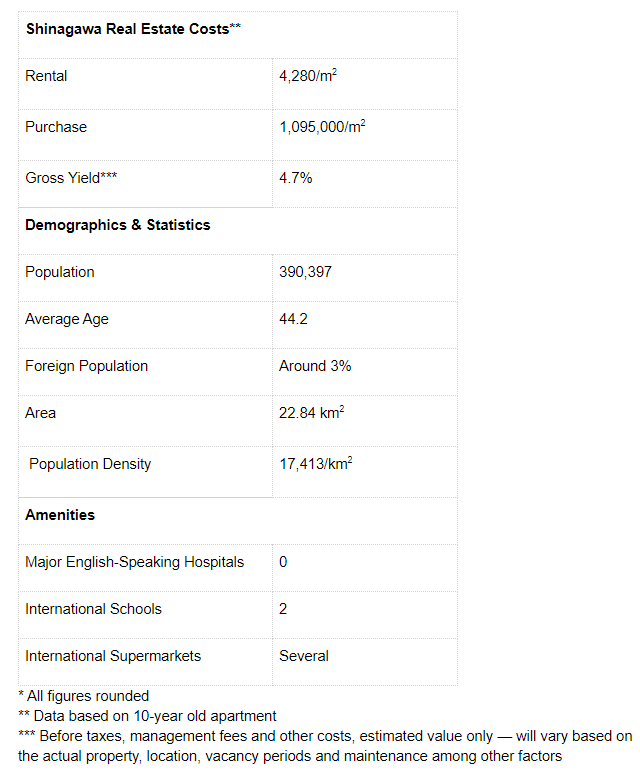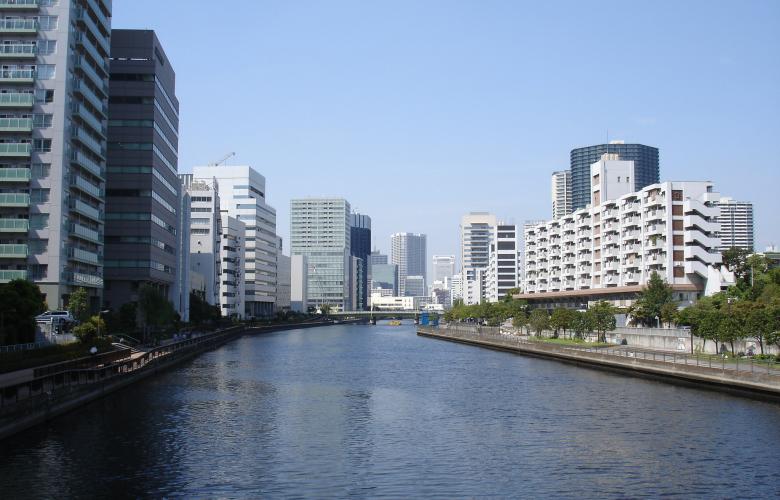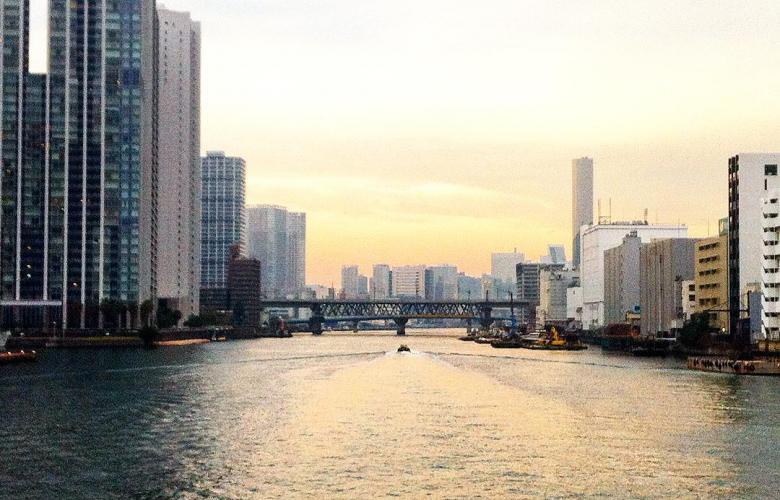Shinagawa area overview
While not part of the central 5 wards of Tokyo (C5W), Shinagawa is still a very centrally located ku (the Japanese word for 'ward'). Many of Shinagawa's train stations are located on the convenient Yamanote ring line that encircles the heart of Tokyo. Several international companies like Adobe Systems, Siemens AG, and Philips have their headquarters here and it is part of Tokyo’s special economic zone.
Traditionally, Shinagawa is synonymous with Tokyo’s industrial harbour where containers are loaded by rows of cranes along the river day and night. Shinagawa Station itself is located just outside the ward, but the surrounding area to the South is part of Shinagawa-ku. Shinagawa Station is 15 minutes on a direct line from Haneda Airport, making it a good choice for international business people who travel frequently. While traditionally considered a less desirable neighbourhood due to its industrial character and the old redlight district around Gotanda Station, Shinagawa Ward is undergoing gentrification and becoming an increasingly popular choice for expats. The stations of Shinagawa, Osaki, and Gotanda are located on the Yamanote Line and around all three, high-end residential properties are springing up.
The ward offers riverside views and living along the river’s more scenic parts and the harbourfront fascinates those that appreciate the charm of modern, urban landscapes. Colourful bridges span Meguro River, which flows through the ward. There are some green areas along the banks where the locals like to stroll or walk their dogs. Other highlights of the ward include Shinagawa Park, Shinagawa Aquarium, and Tennozu Isle, a modern skyscraper complex with offices, shops, and restaurants, all connected by a boardwalk.
Demographics of area
A total of 390,397 inhabitants were counted during Shinagawa Ward’s latest census. With 17,413 people per square kilometre, the density of population falls into the average for central Tokyo. Just 12,526 foreign inhabitants call Shinagawa their temporary or forever home, many of them international expats sent by their home companies and embassy staff. The ward is 22.84 sq km and notable districts include, besides the area around Shinagawa Station, Gotanda, Osaki, and Hatanodai.
Amenities and attributes
While Shinagawa Ward has no international hospitals, several large Japanese hospitals, including Tokyo Shinagawa Hospital, service the area. Neighbouring Minato Ward also has several options for English speakers.
There are also no exclusively international supermarkets, but Seijo Ishii and Kaldi Coffee Farm stock import goods and have several branches across the ward.
For those looking to exercise, there is no shortage of gyms in the ward. The 24-hour chain Anytime Fitness operates branches in Shinagawa Ward and Gold’s Gym has branches too, as well as popular Japanese chains like Tipness.
Families with children find many international schools in the nearby C5W, as well as two international schools that are located in Shinagawa. KAIS International School, a co-ed school from grade 9 to 12, and Shinagawa International School, a co-ed from pre-school through to grade 6.
Real estate details
While not part of the C5W, Shinagawa property prices are just as lofty. Buying a new unit or detached house sets you back JPY 1,250,000 per square metre, with prices gradually falling the older the property gets. A 10-year-old property is slightly more affordable, but still breaks the 1 million mark at JPY 1,095,000. Older places of 20 and 30 years become quite affordable, at around JPY 850,000 and JPY 700,000 per square metre, respectively.
Unsurprisingly, rent prices in the centrally located ward are also on the expensive side, but comparable to those you'd pay in the C5W. New places will set renters back JPY 4,280 per square metre, while 10-year-old units clock in at JPY 4,060. Properties that are 20 years old cost JPY 3,660 per square metre per month on average, and 30-year-old places, reaching the intolerable for the Japanese who love anything new, cost JPY 3,350 per square metre per month.
Shinagawa overview*

Similar to this: By Mareike Dornhege
Meguro area guide – Riverside living
Minato ward guide: Tokyo’s international centre
Shibuya area guide: Life in Tokyo's most famous quarter







